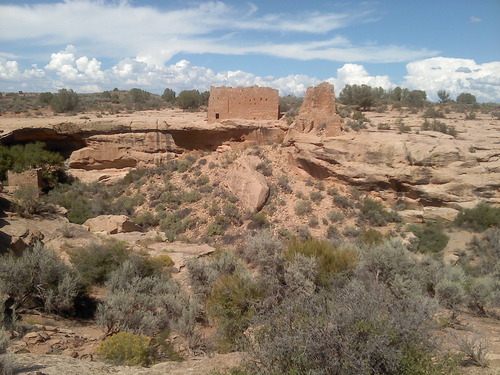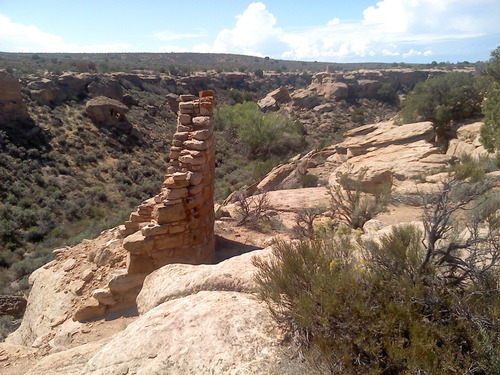Recently, I was in Durango to drop someone off at the Colorado Trail and then drove on to Hovenweep (Utah), to admire the 800 year old stone and mud buildings that have survived.
The word, “Hovenweep” is Paiute and Ute, meaning “deserted valley,” which it is, a small valley in arid land that once provided water, food, and housing for about 2,500 people.
These people have until recently been referred to as the Anasazi, the Navaho word for “ancestors of our enemies [i.e. Pueblo people],” but now are referred to as “ancestral Pueblo people."

But assuming an English etymology, I see the "weep” in this area, both how water used to seep through the stone, providing life to the valley, and how, for reasons unknown, these people, as did those in Mesa Verde and Chaco Canyon, fairly suddenly picked up their portable belongings and moved southward, leaving behind some of the nicest dwellings money can’t buy.

The site itself is (necessarily so) protected, so you can look but not touch. A trail leads around the top of the valley and then bisects it (back to the visitor station), making for a 2 mile walk.

While I didn’t drive to them, a few outlying structures are within about 5 miles of Hovenweep, allowing for a little more walking around.

It would be nice to visit this area in spring or fall, making for a cooler experience, but it does raise one’s respect for the diligence of these people who, with few tools, built such lasting structures, perhaps on hot days such as the day I was there, in preparation for the winter to come.
